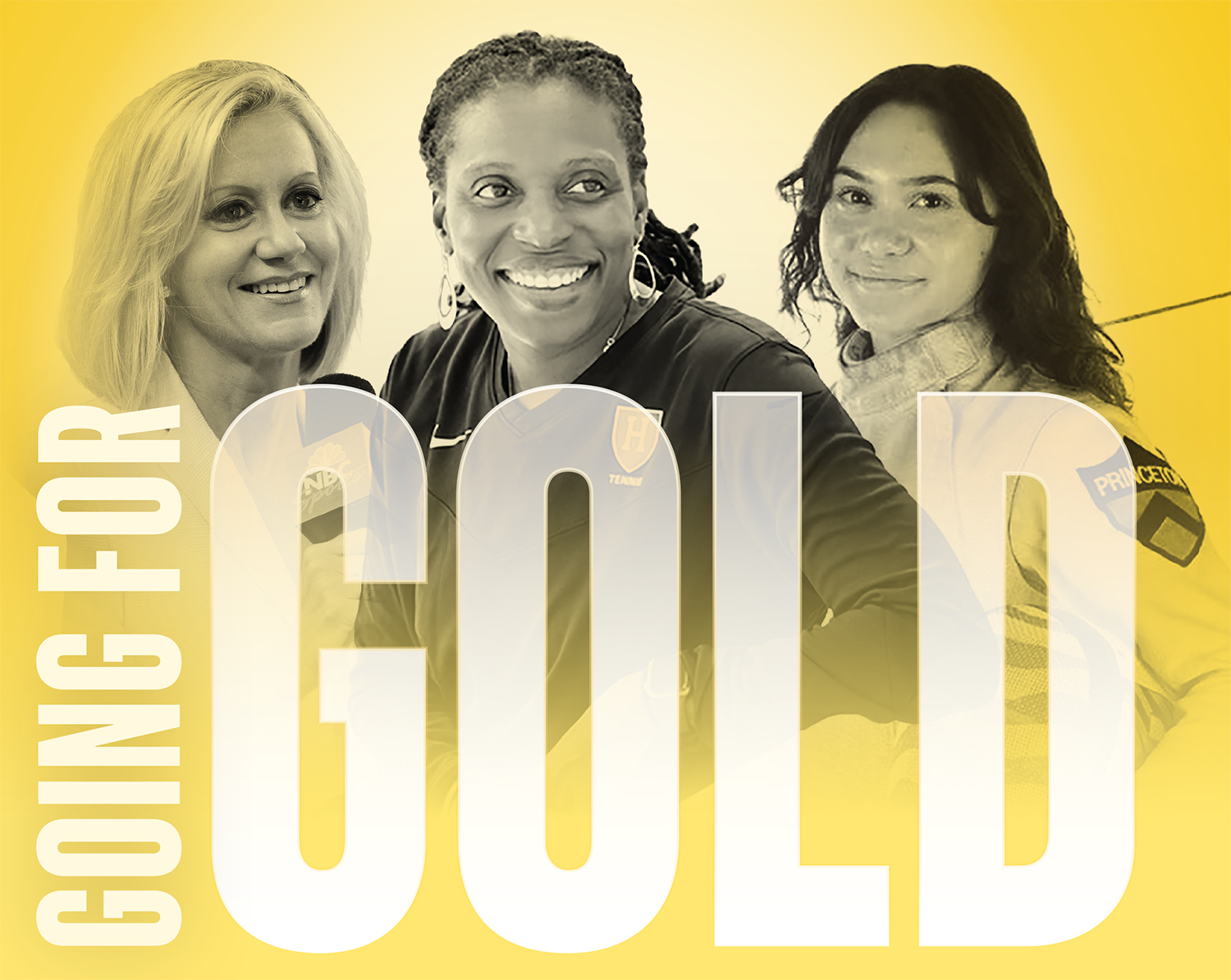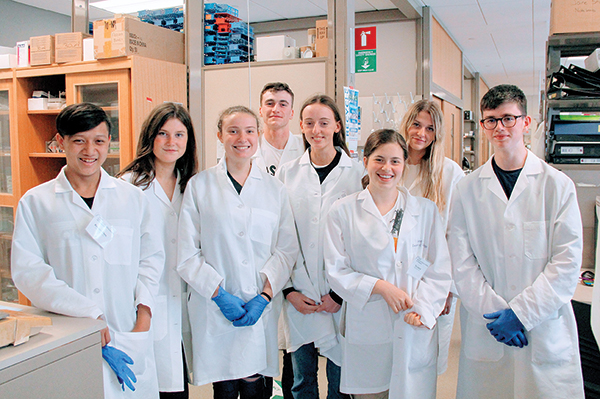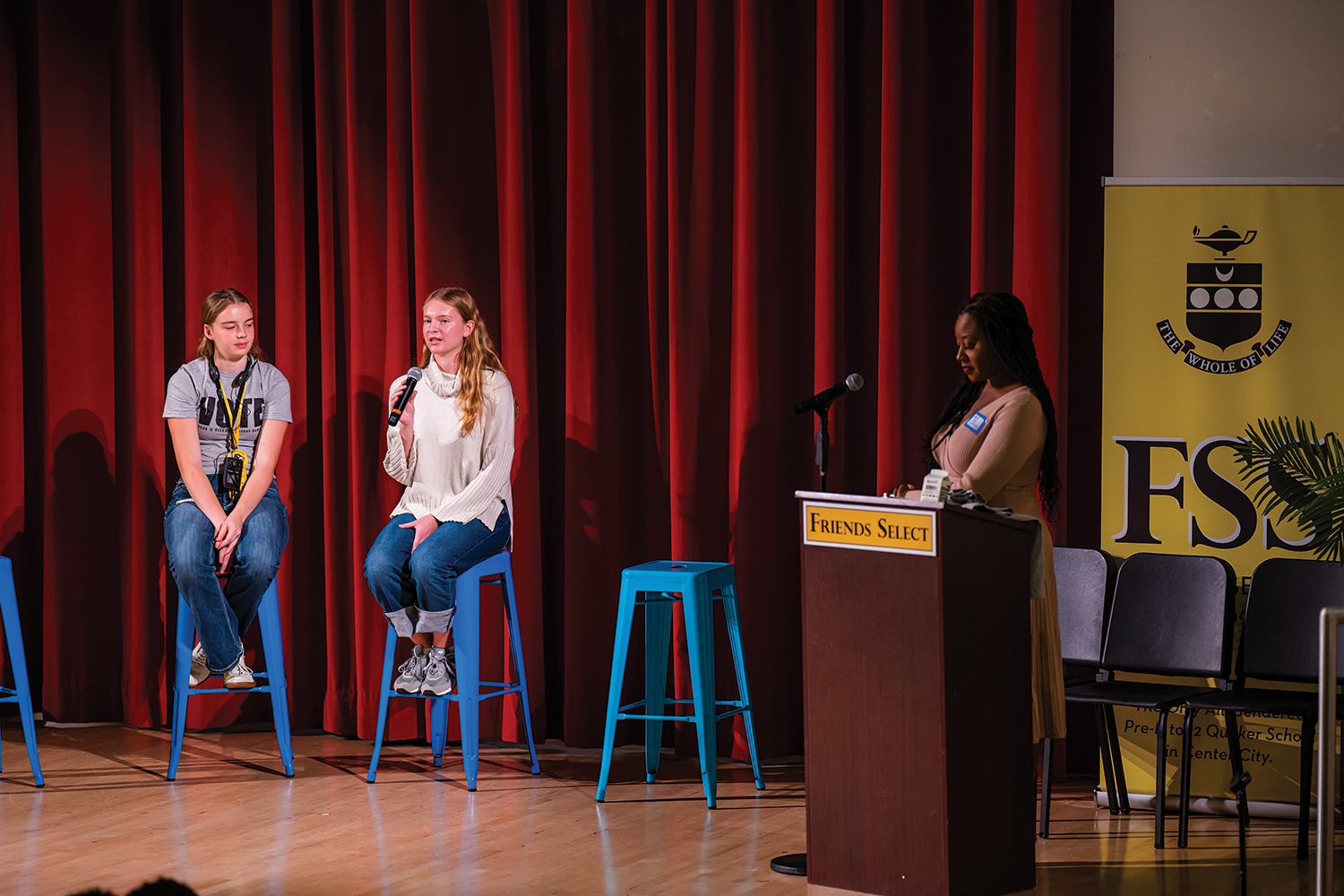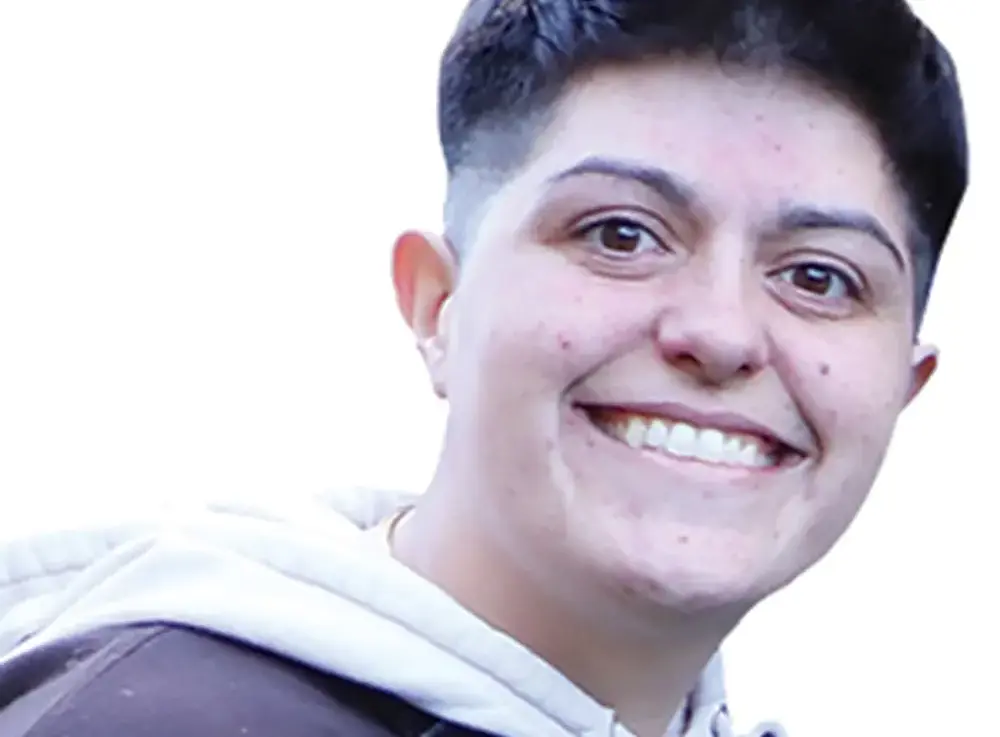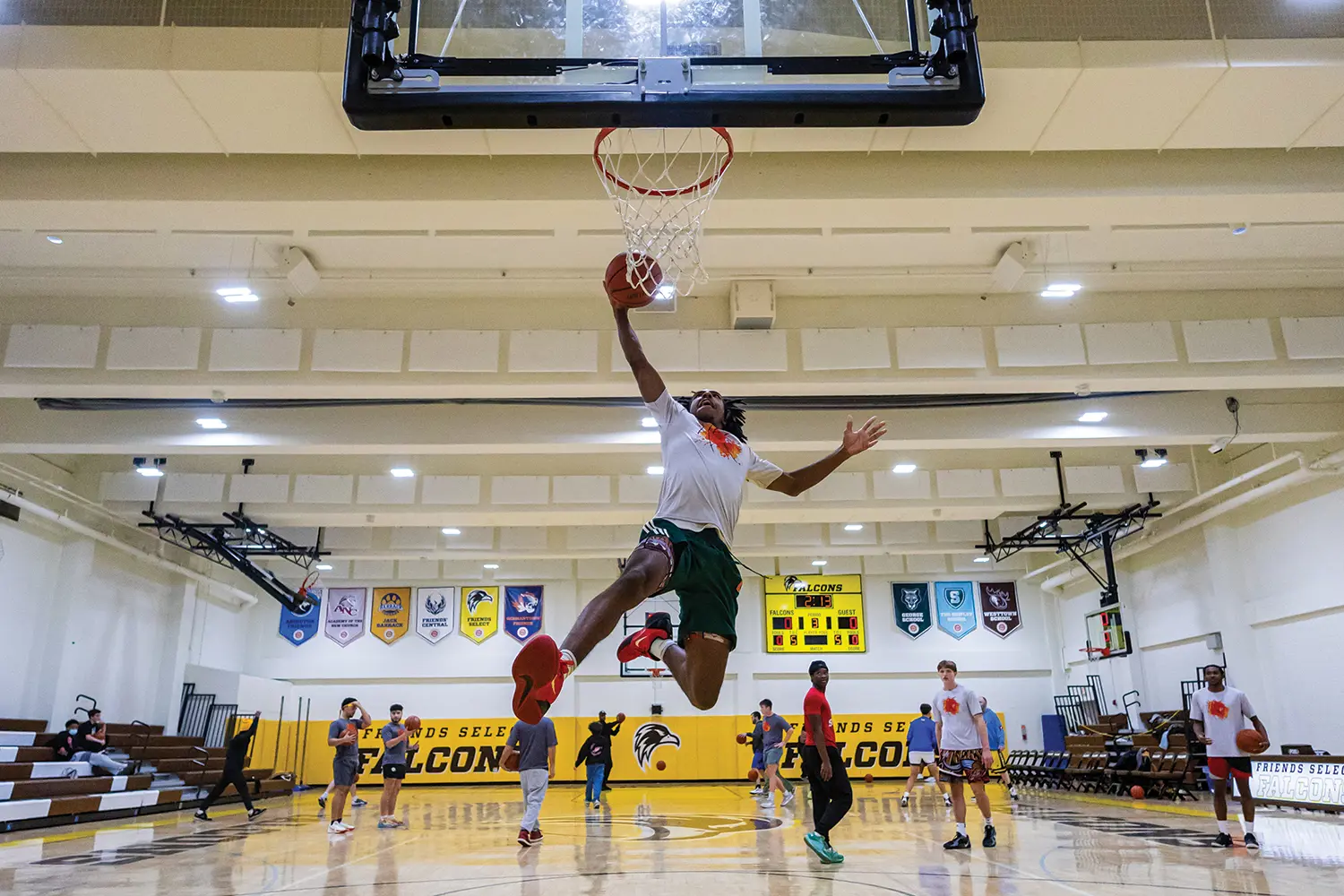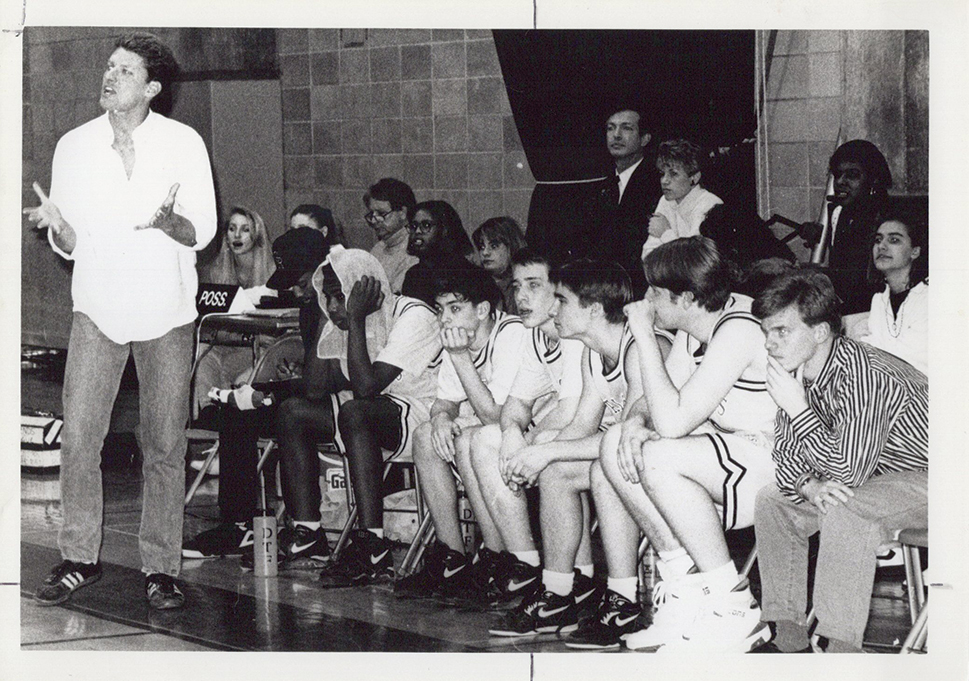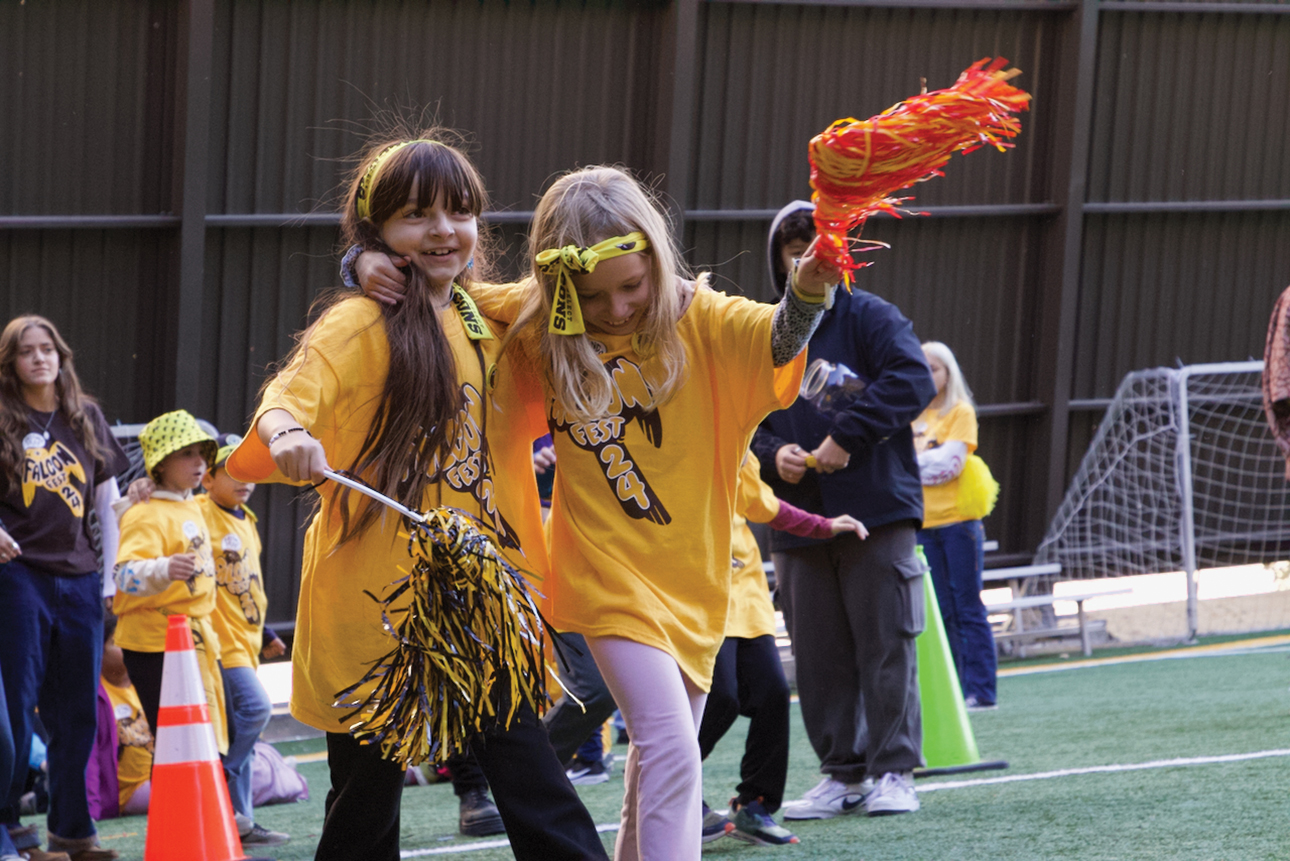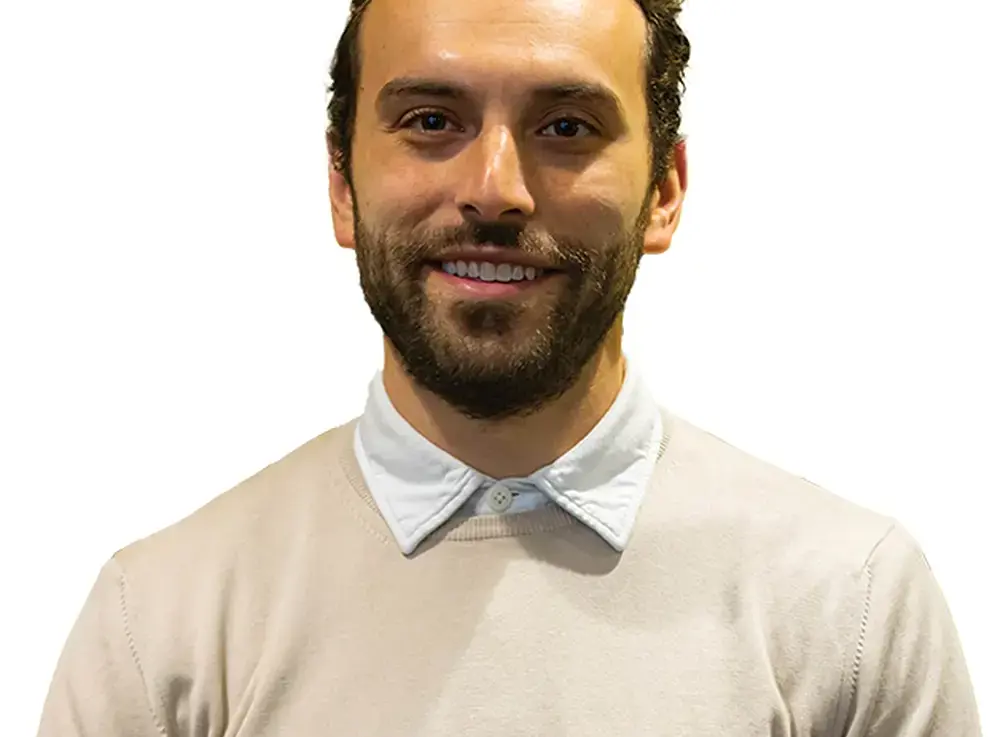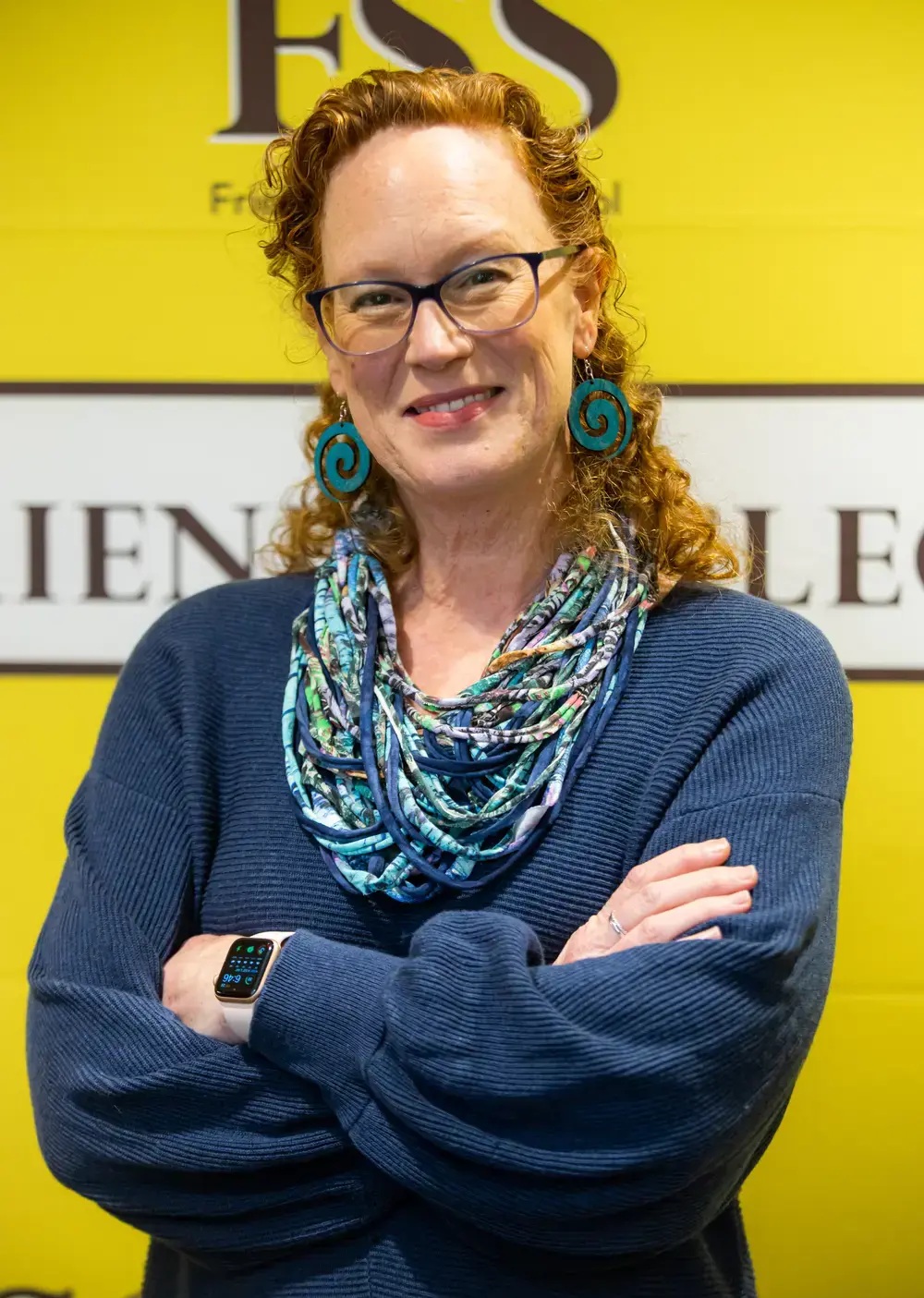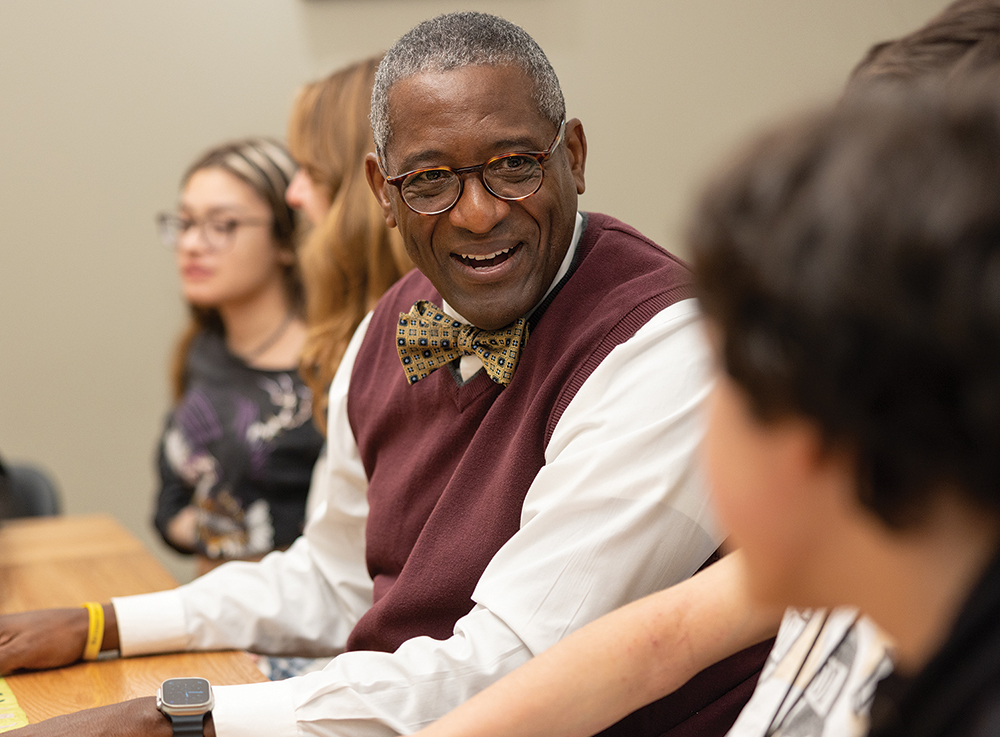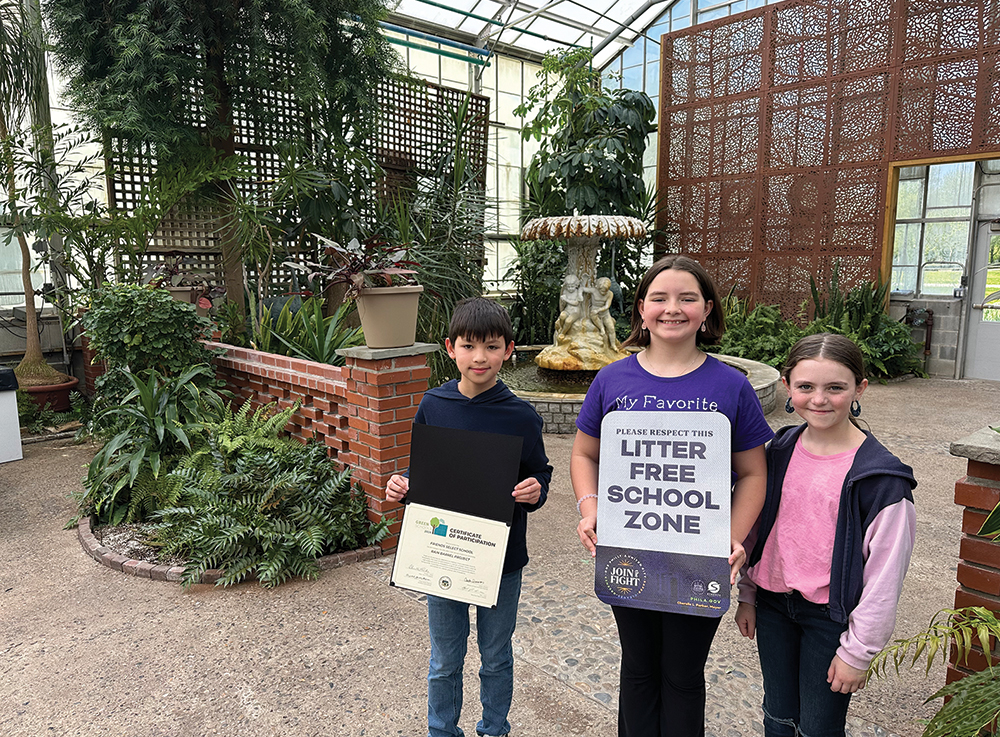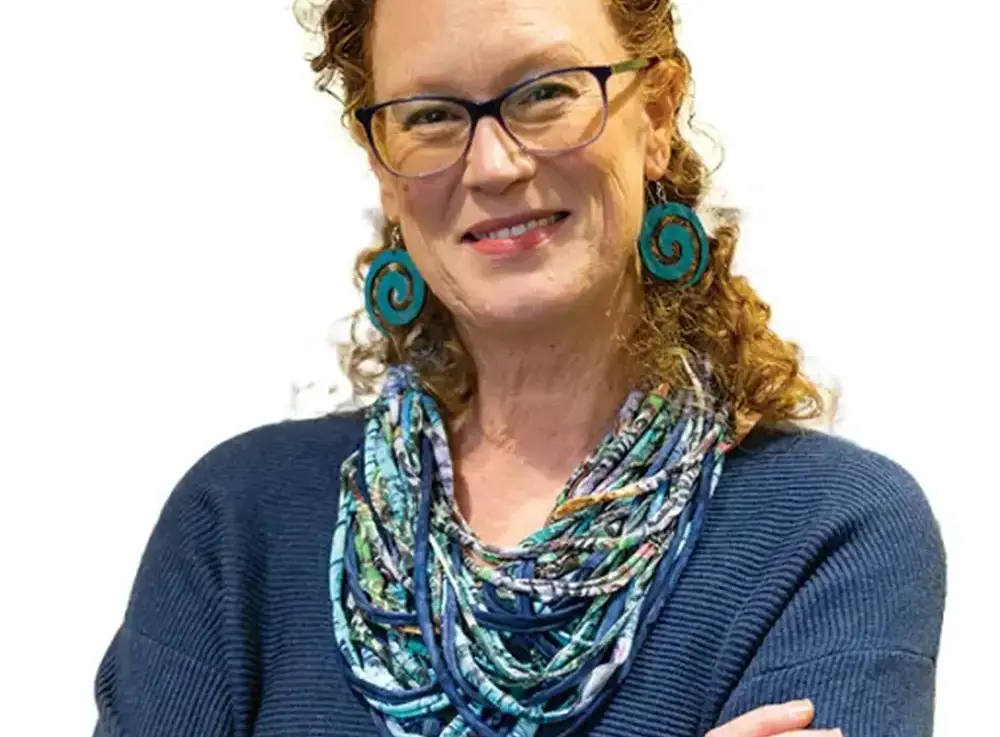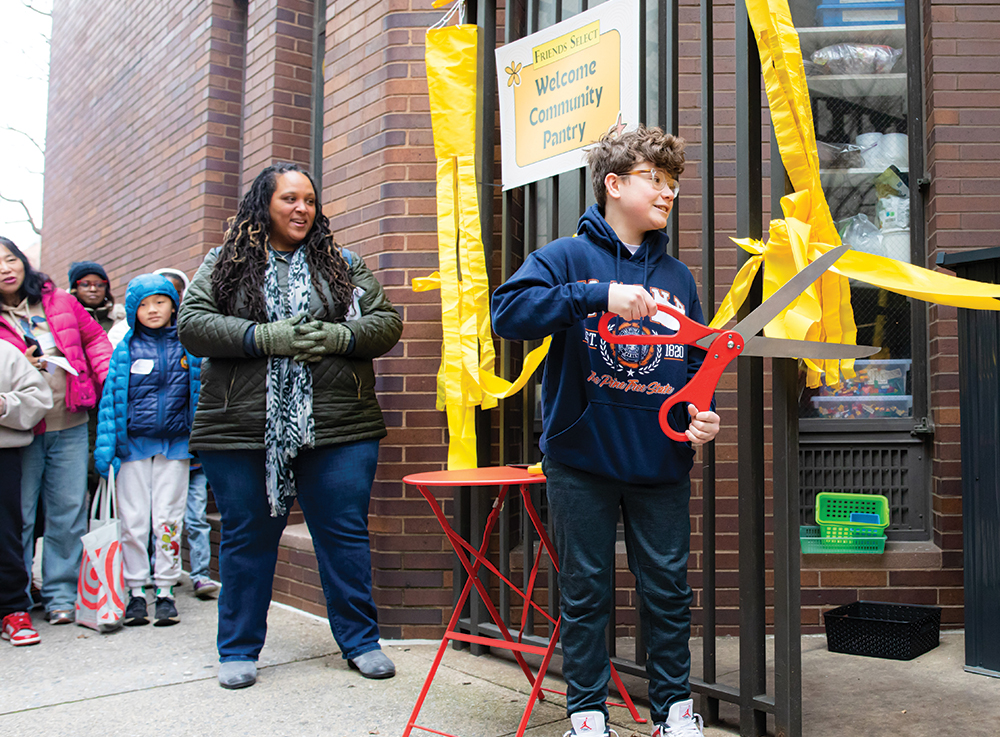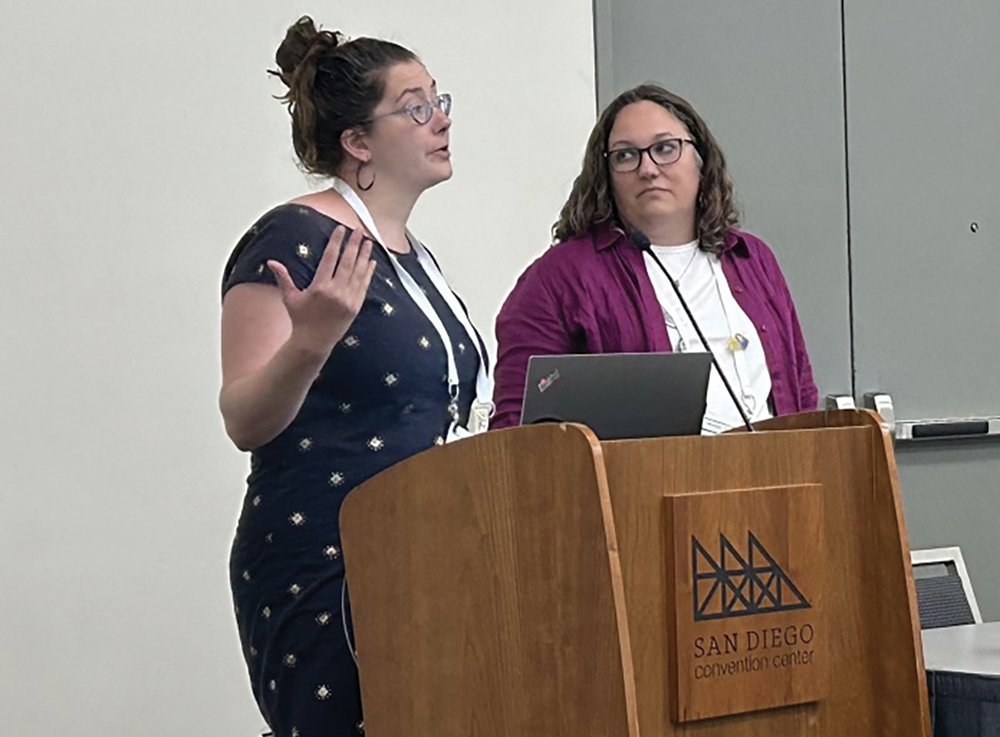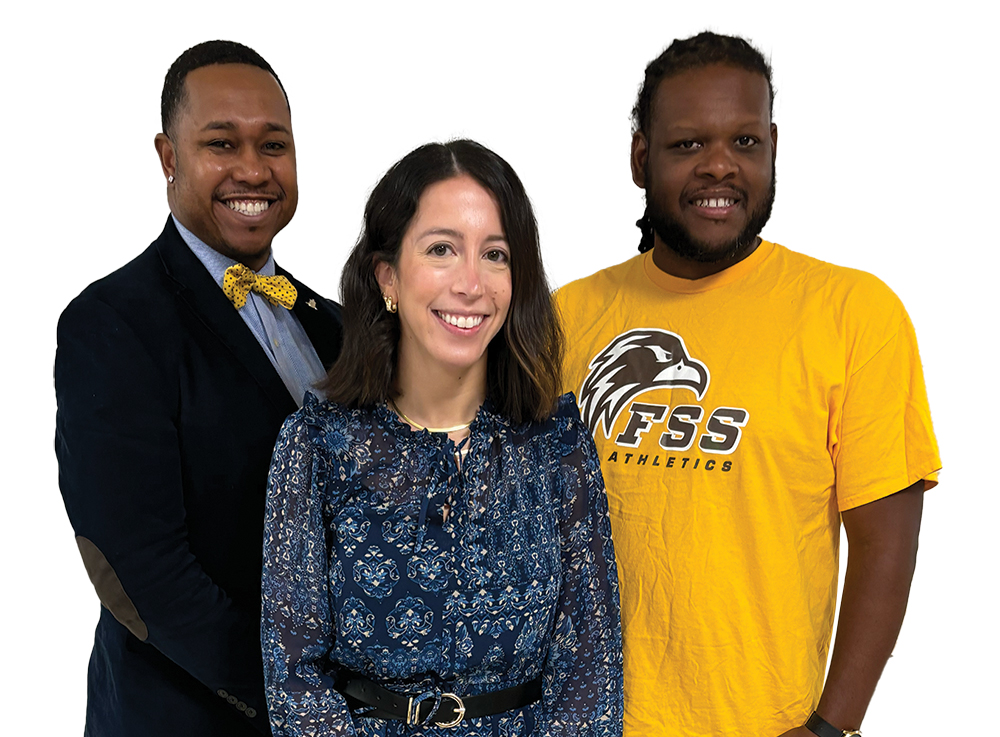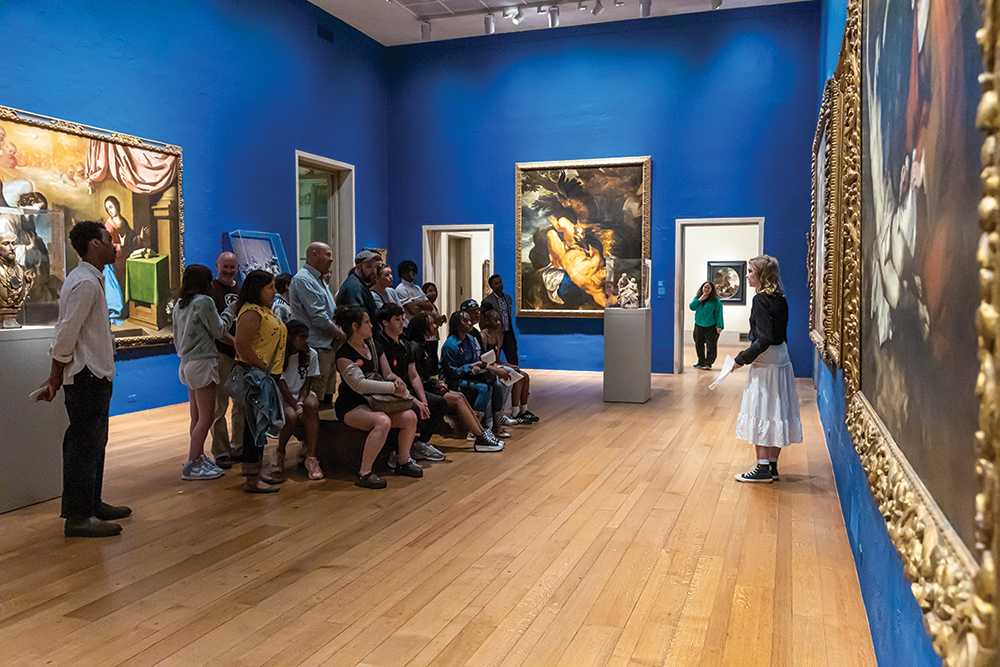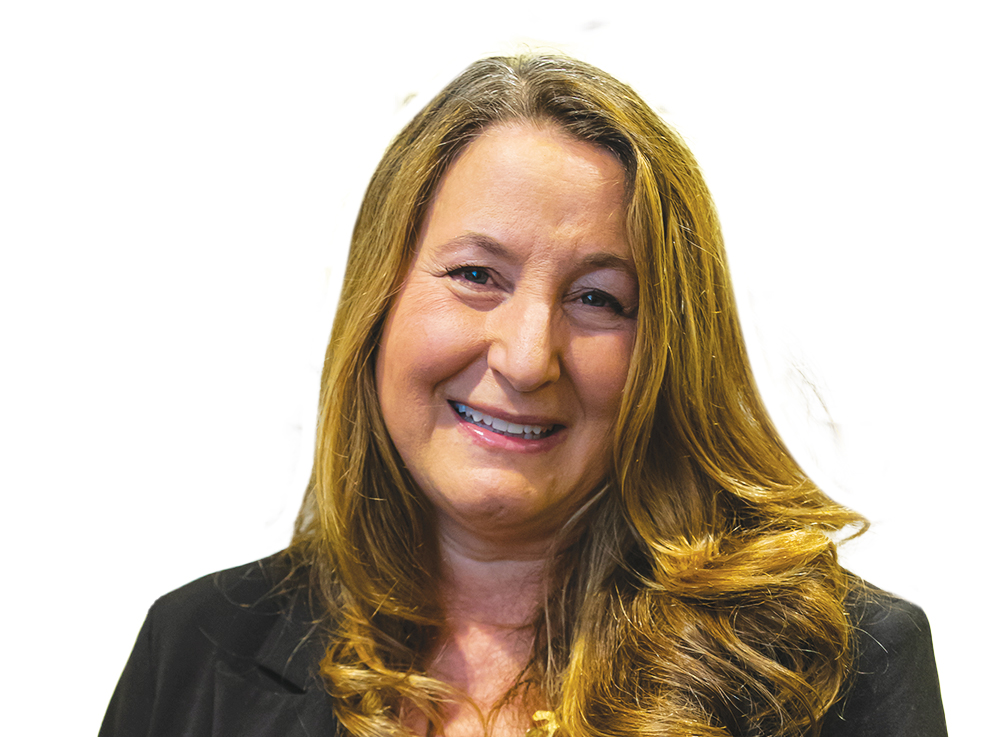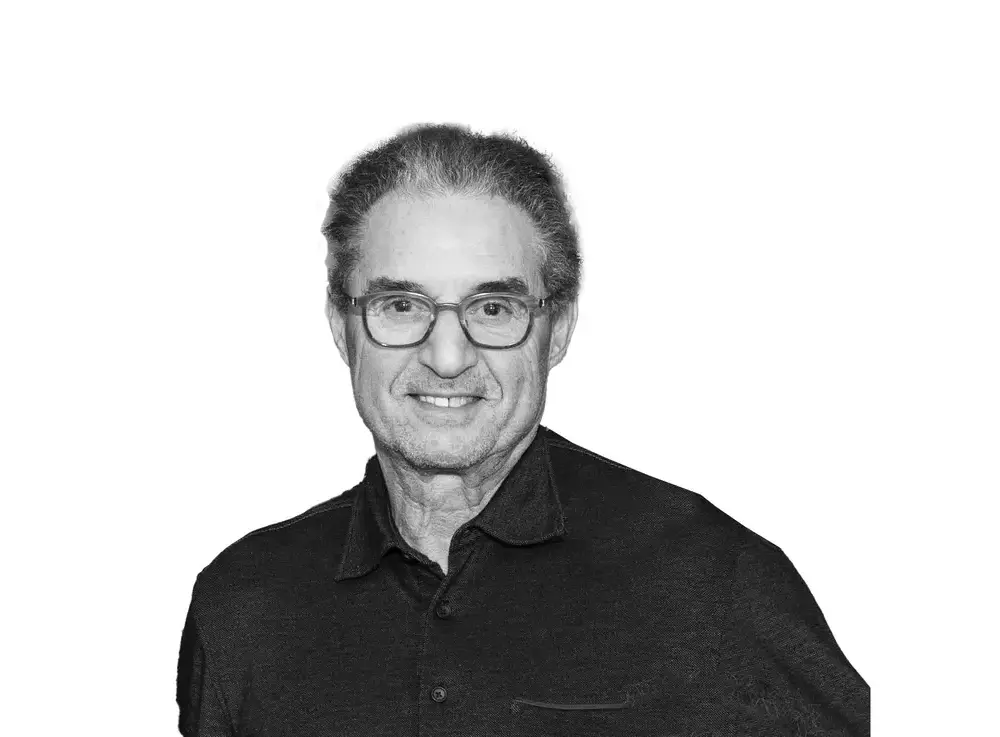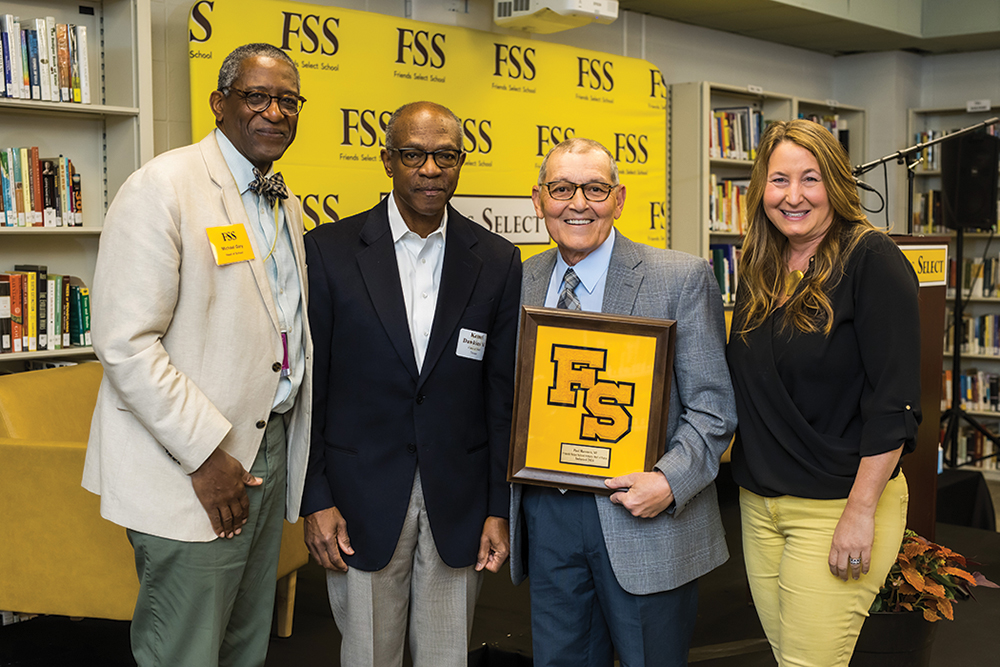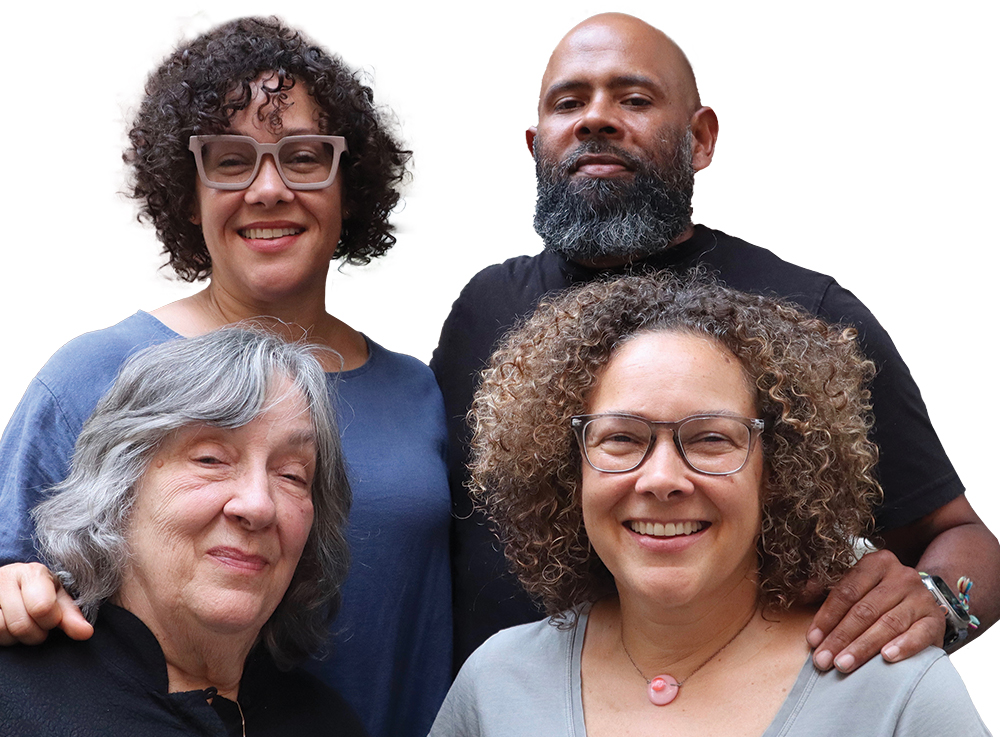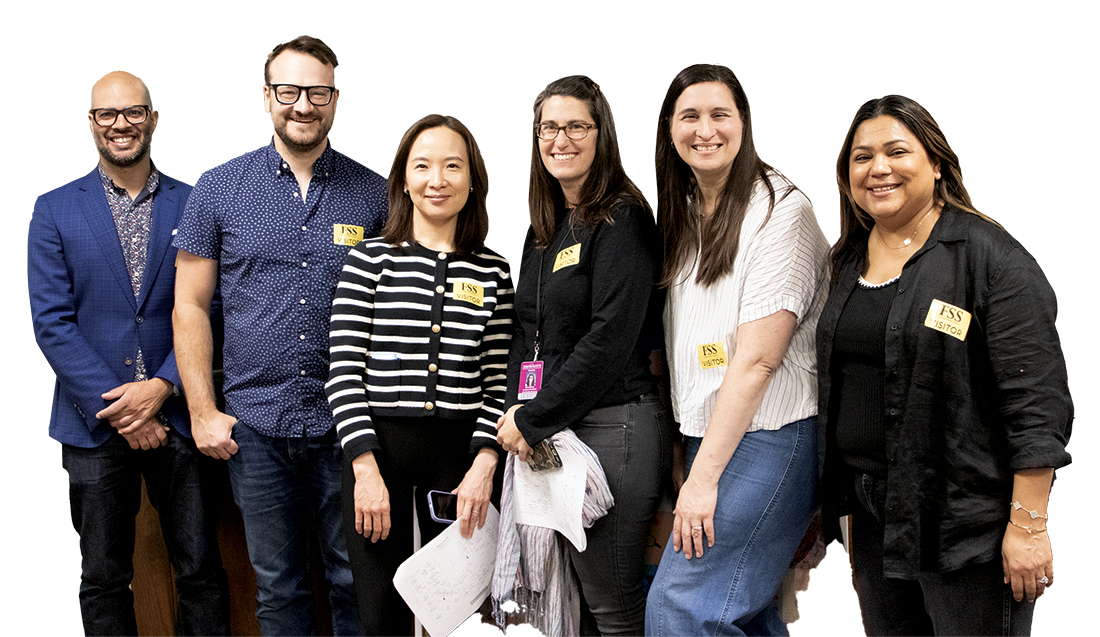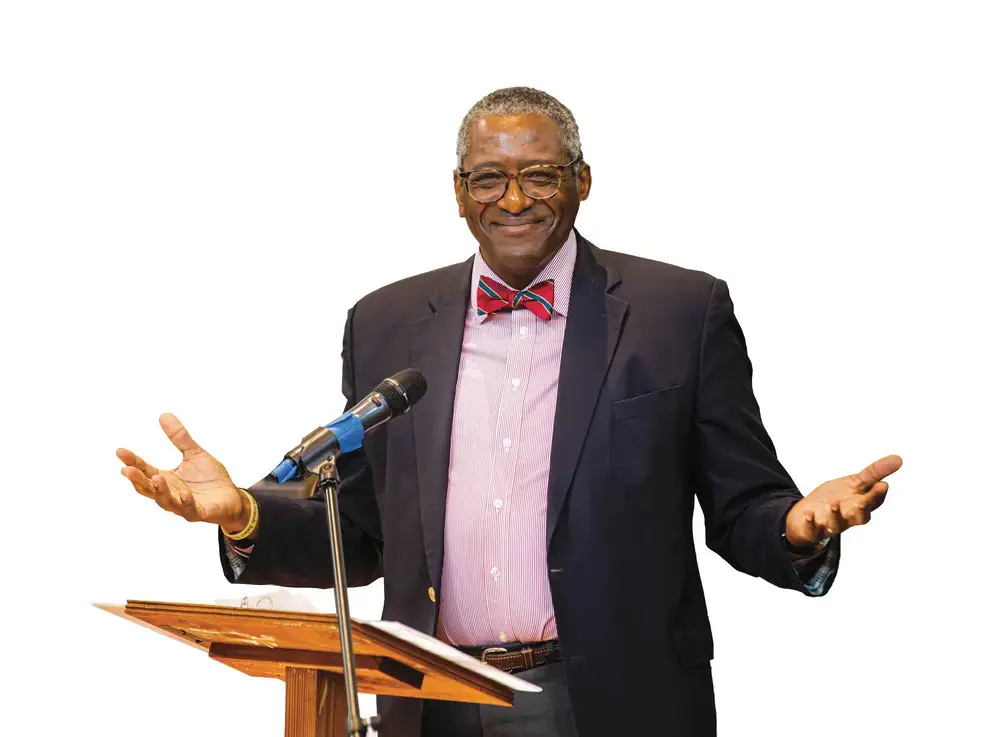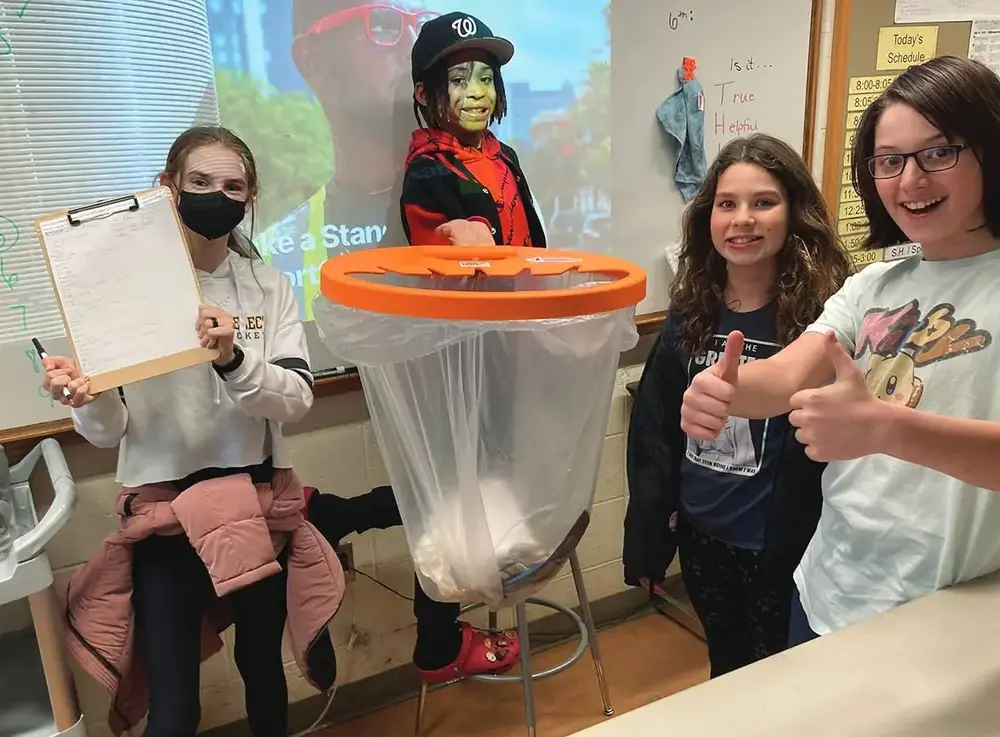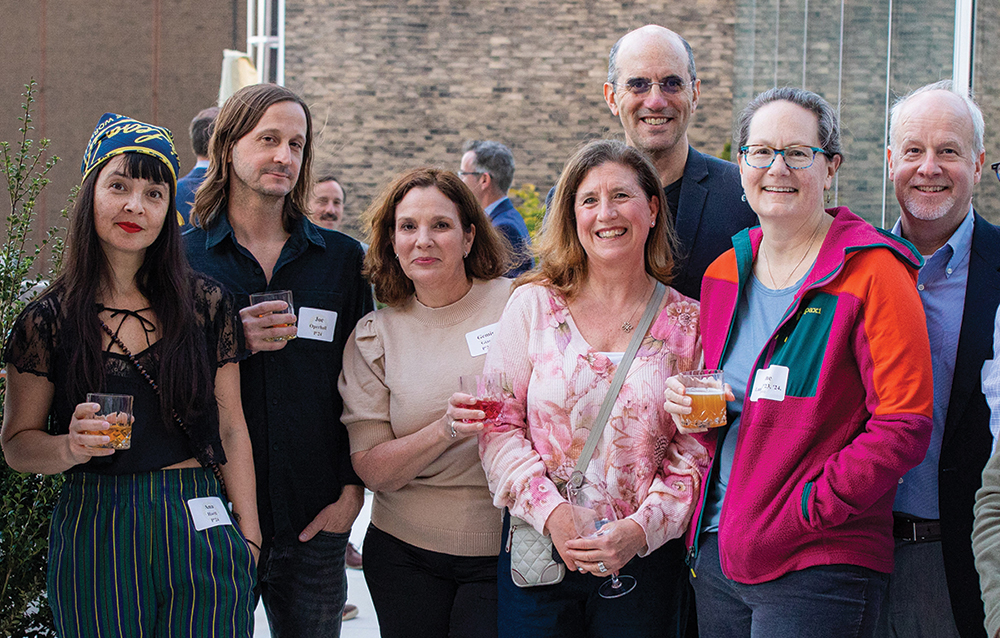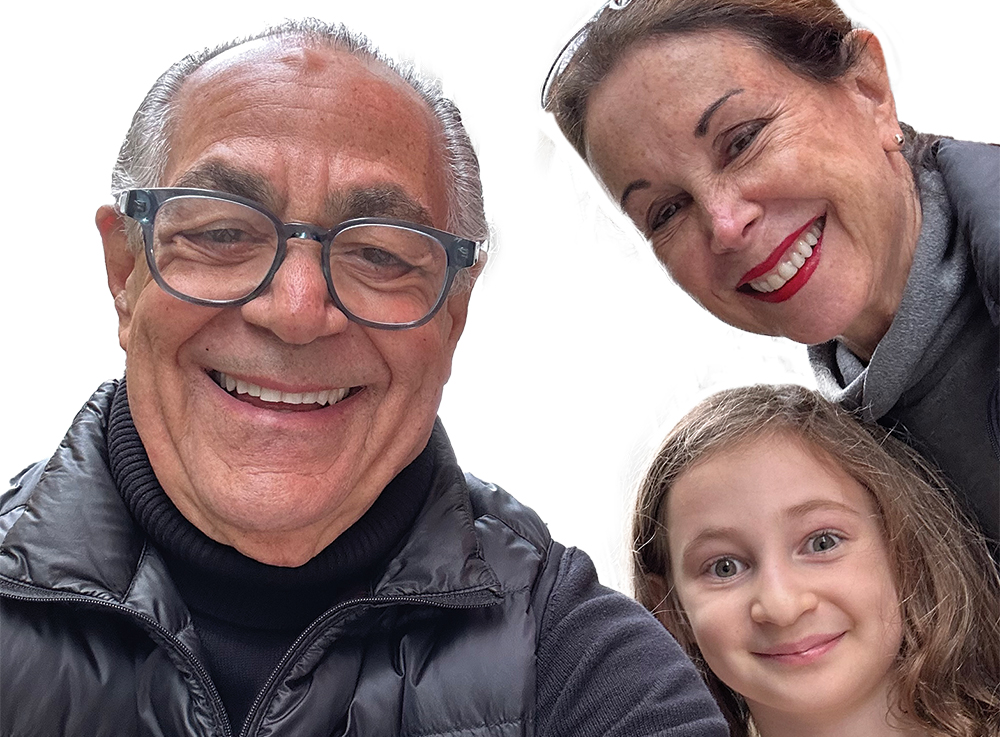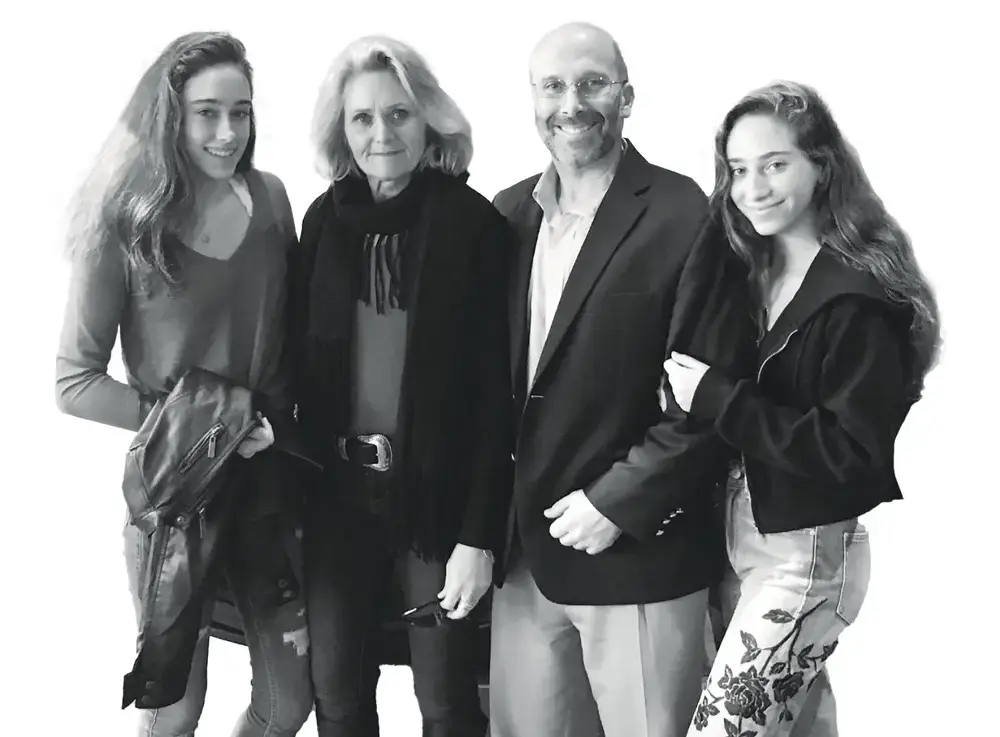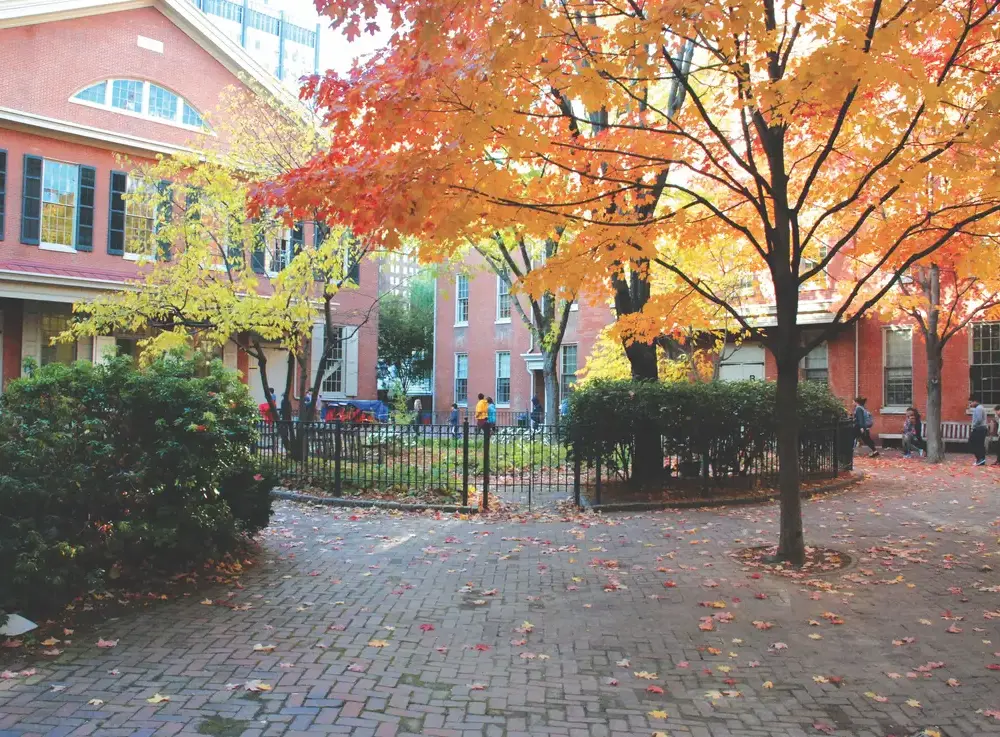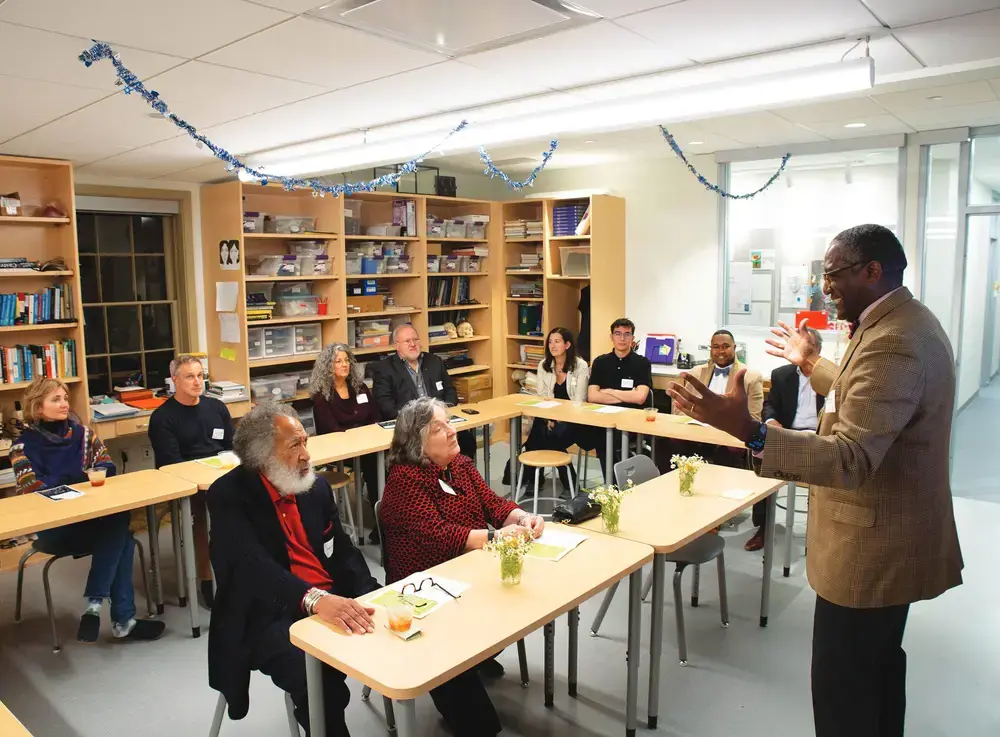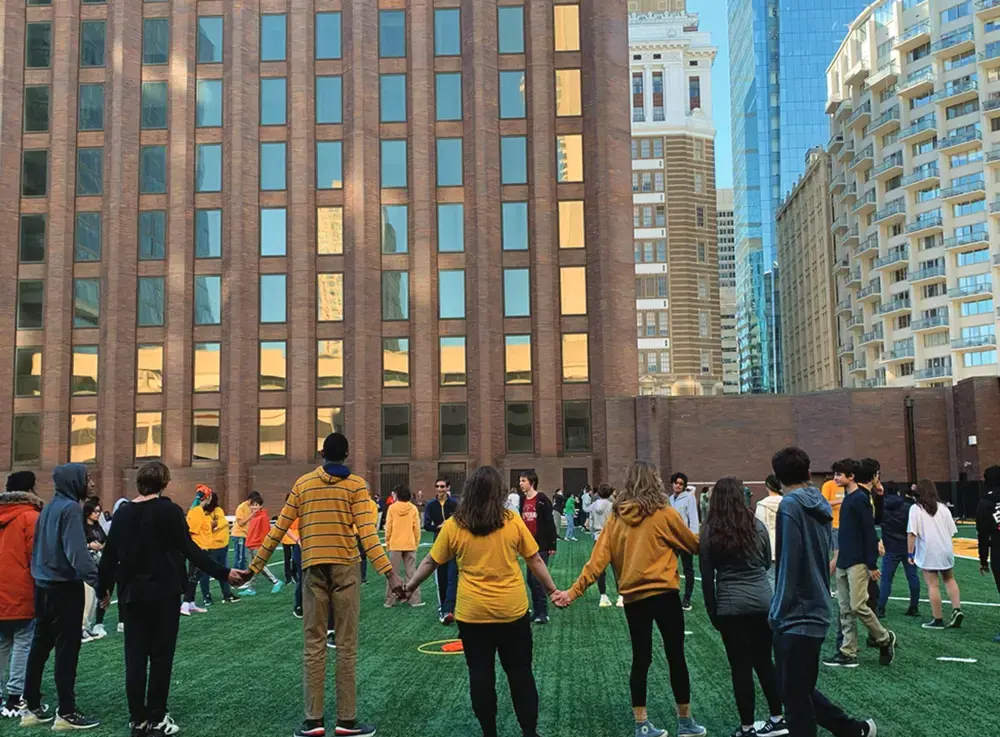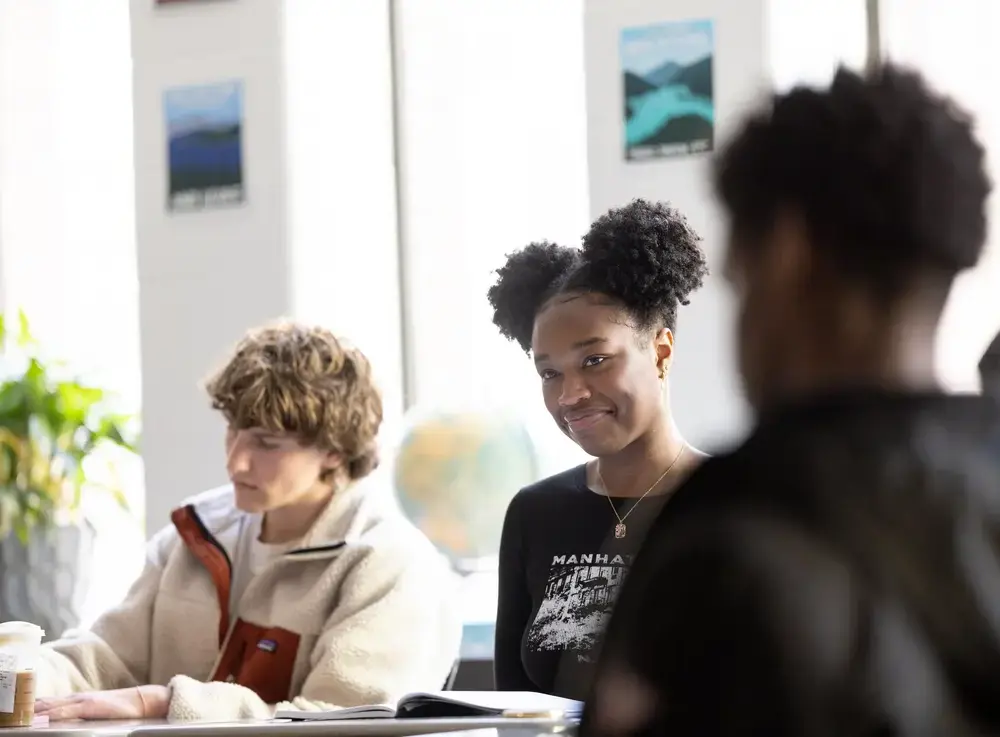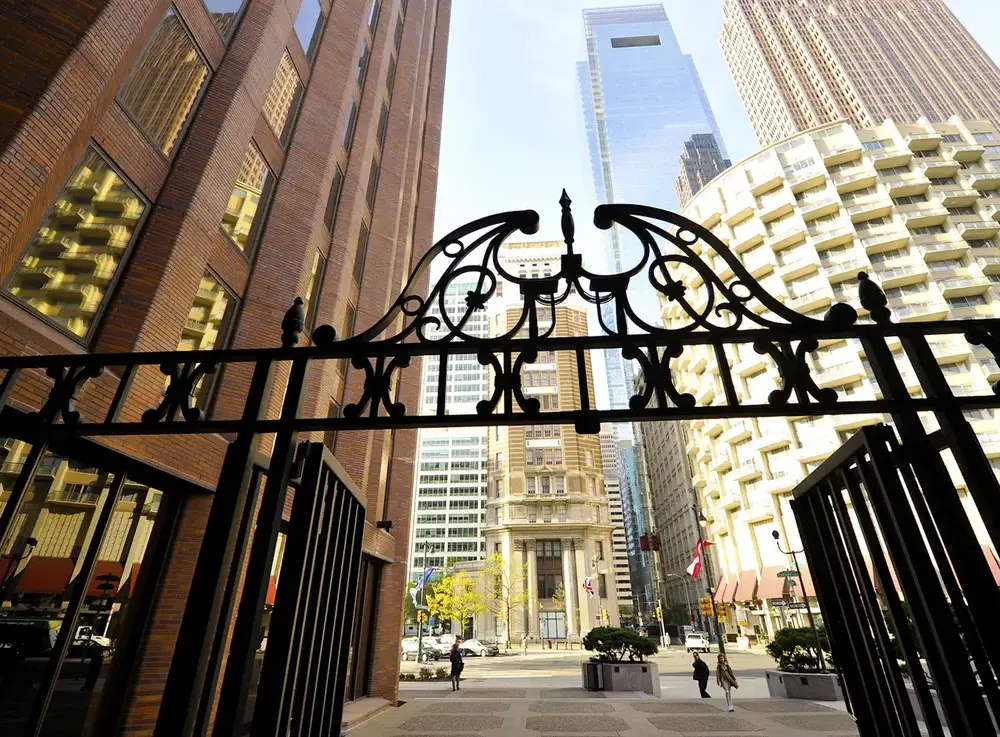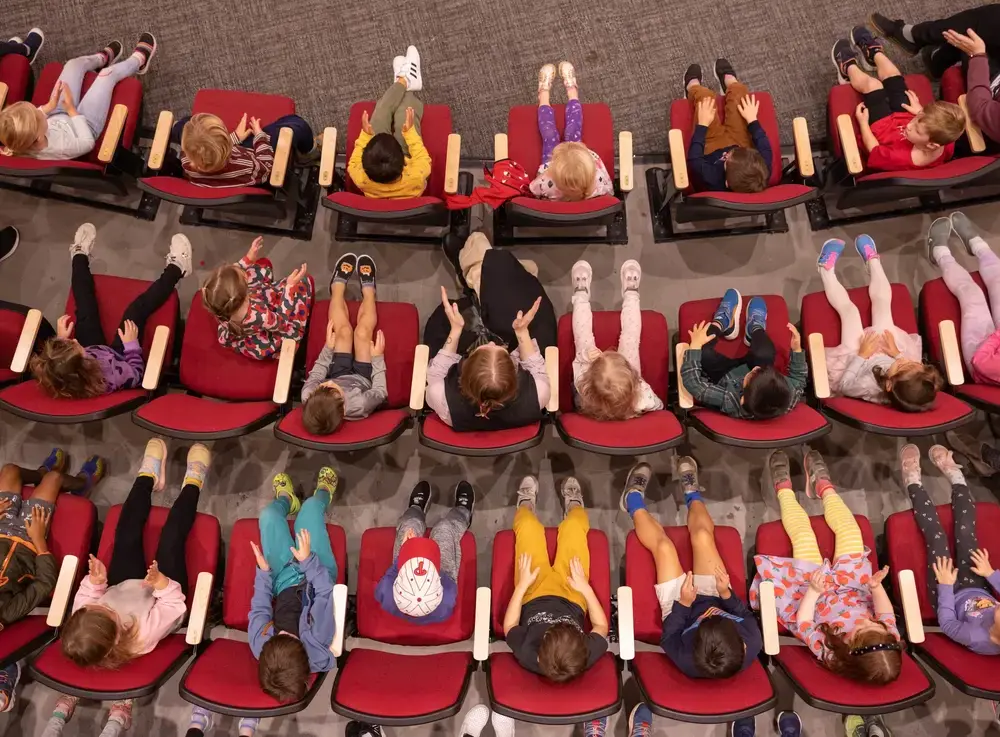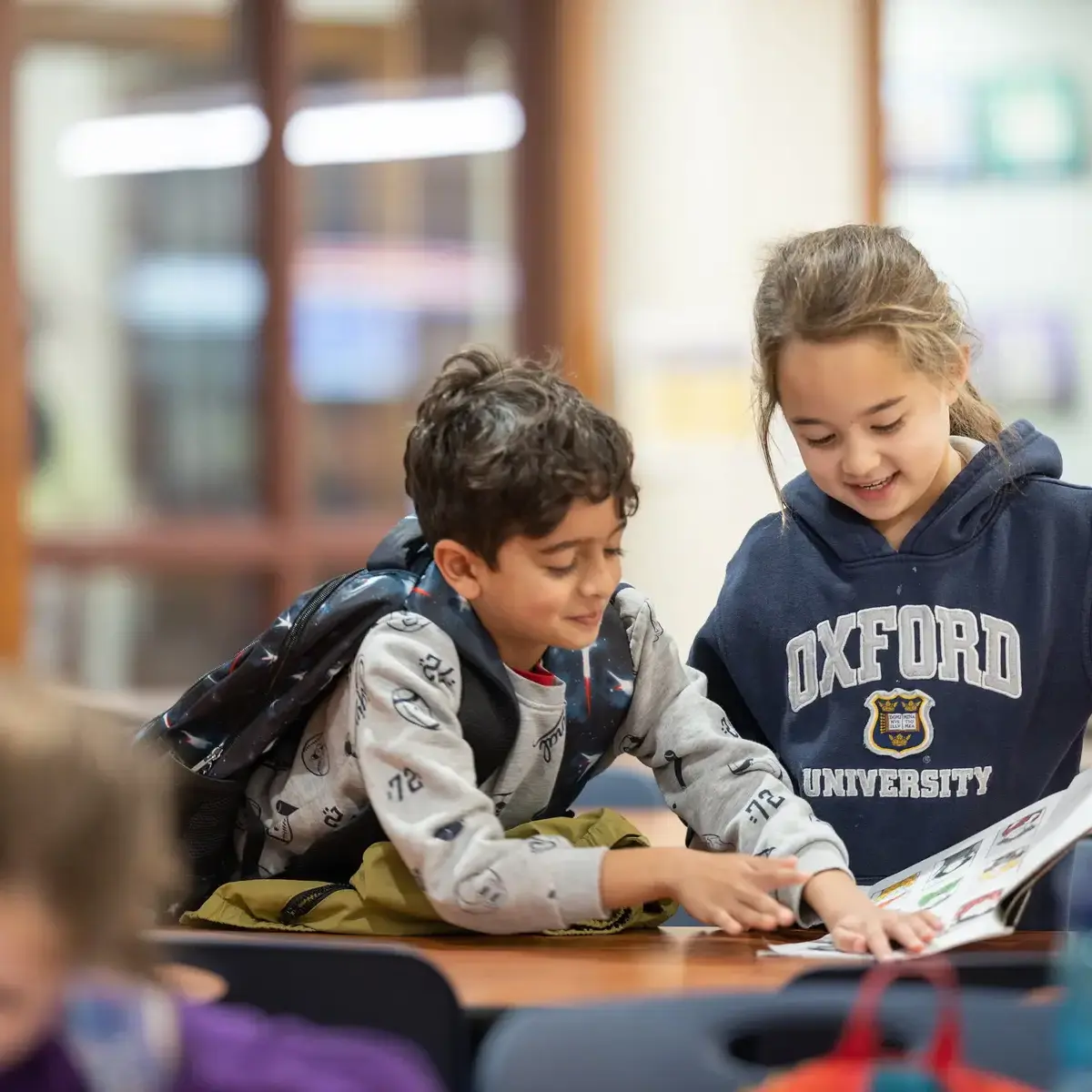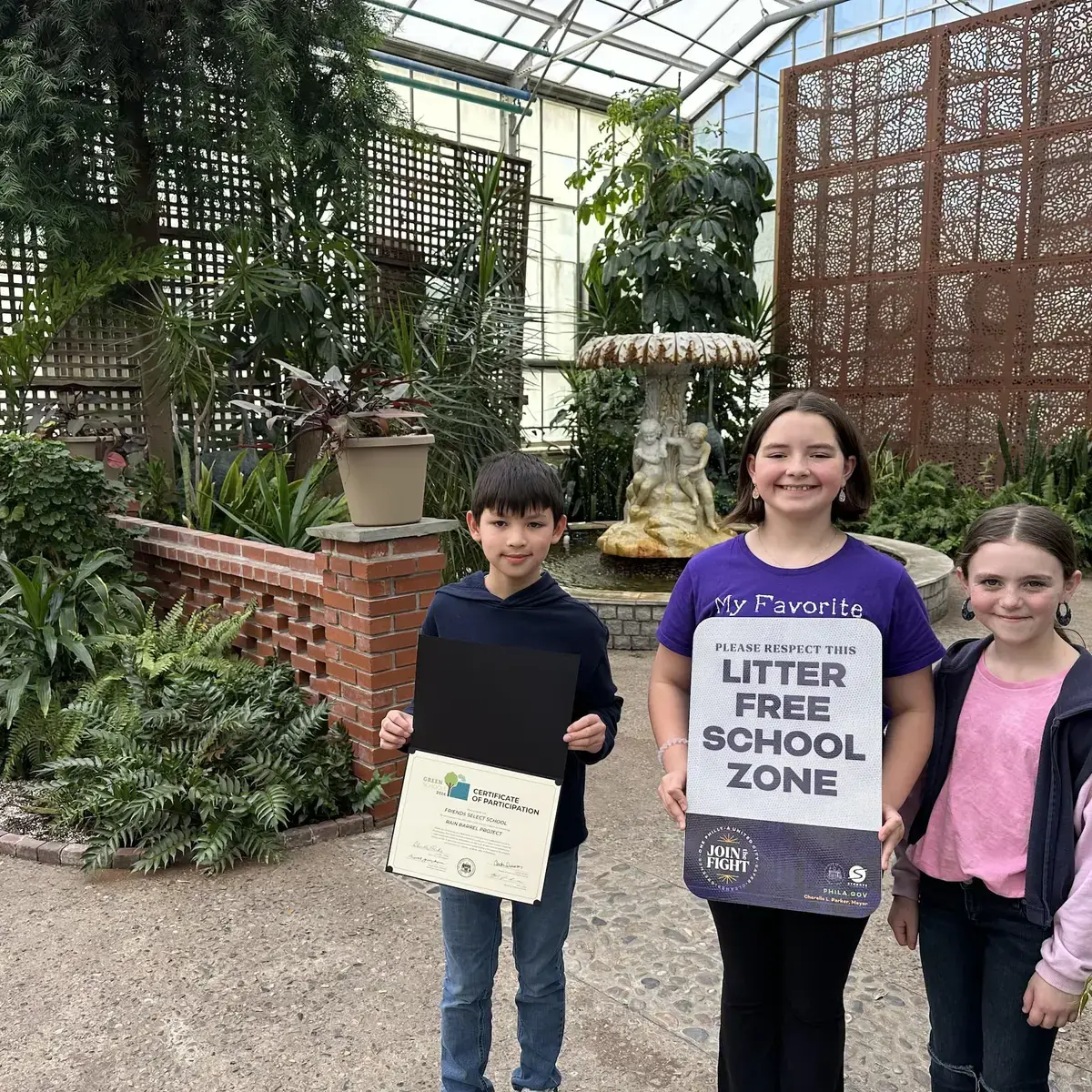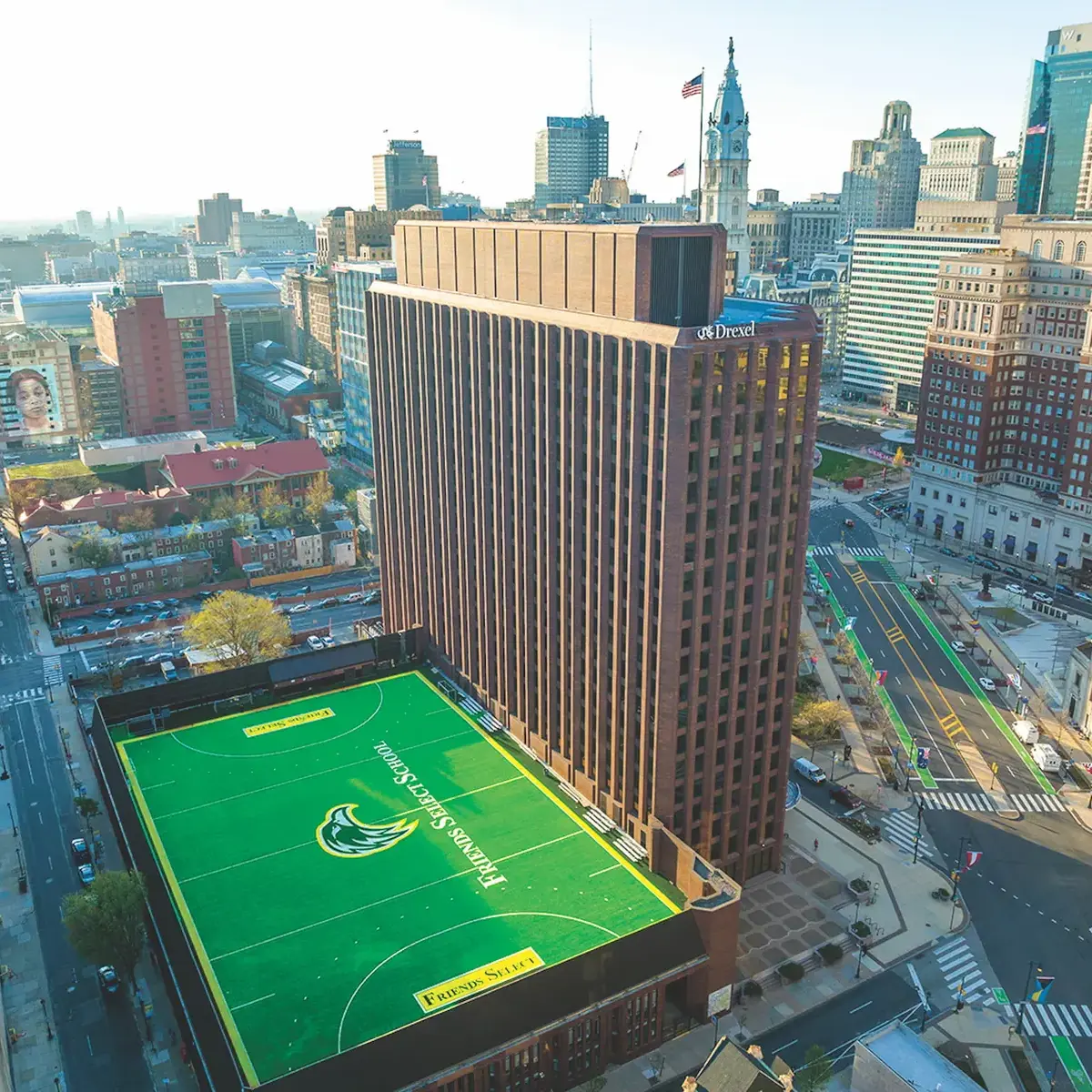Select News
Get the latest updates and news from Friends Select School. |
Stay informed about school events, achievements, announcements, and community highlights. |
-
Fri, 02 May 2025
Going For Gold: Andrea Kremer ’76, Traci Green ’96, and Maia Weintraub ’21
Friends Select School is proud to celebrate the extraordinary achievements of our alumni, who excel in diverse fields while embodying the values instilled in them during their time at the school. Three remarkable Friends Select alumnae—Andrea Kremer ’76, Traci Green ’96, and Maia Weintraub ’21—exemplify this tradition.
-
Fri, 02 May 2025
Michael Gary Speaks: Spring 2025
As I reflect on the vibrant and dynamic community at Friends Select School, I am filled with a profound sense of awe.
-
Fri, 02 May 2025
Global Perspectives: Expanding Friends Select’s Study Abroad and Cultural Exchange Programs
By expanding partnerships with schools throughout the world, Friends Select provides upper school students with opportunities for cultural exchanges and language immersions, all rooted in its commitment to cultivating global perspectives and transformative learning experiences.
-
Fri, 02 May 2025
Empowering the Next Generation of Civic Leaders
Friends Select School hosted a Student Civic & Community Engagement Summit (SCCE) last October in celebration of National Voter Education Week.
-
Fri, 02 May 2025
Caring for Our Community: In Conversation with Recently Hired Employees
In this continuation of our Select News series, we highlight some outstanding employees who have recently joined Friends Select as they share their perspectives of our school.
-
Fri, 02 May 2025
Unveiling a Newly Refurbished Gymnasium
In time for the winter sports season, Friends Select School updated the gymnasium of its Parkway Building, creating a modern, multipurpose facility to support the school’s athletic programs, holistic curriculum, and community events.
-
Fri, 02 May 2025
From the Archives: Updating Our Athletic and Physical Education Facilities
The evolution of Friends Select’s athletic and physical education facilities mirrors the school’s growth over time.
-
Fri, 02 May 2025
Inaugural Falcon Fest Soars
On October 17, Friends Select students, faculty, and staff celebrated the inaugural Falcon Fest, an event designed to cultivate community and school spirit across all grade levels.
-
Fri, 02 May 2025
Excellence in Teaching and Learning Beyond Our Classrooms
Friends Select faculty and staff exemplify a commitment to excellence in teaching and learning beyond their classrooms.
-
Fri, 02 May 2025
Giving Back: Ben Behrend '12
As a young alumnus, Ben Behrend '12 has been a dedicated supporter of the school that shaped his life in meaningful ways.
-
Fri, 02 May 2025
Above Board: Spring 2025
As I come to the end of my board service after nine years as a trustee—the last five years as board clerk—I have been reflecting on why I said yes to leading Friends Select’s board.
-
Sat, 30 Nov 2024
Michael Gary Speaks: Fall 2024
By working together, we can provide future generations with the resources and opportunities they need to thrive.
-
Wed, 20 Nov 2024
Integrating Green Spaces into Our Educational Curriculum
Philadelphia’s diverse green spaces are thoughtfully woven into programming at Friends Select School, providing students with hands-on learning experiences that leverage the natural environment for educational enrichment.
-
Tue, 19 Nov 2024
Making Major Strides as We Advance Friends Select
As the school looks to a future that includes continued increases in enrollment and plans for a monumental transformation of the Parkway Building’s back lot, updates to Advance Friends Select ensure the school remains at the forefront of educational and institutional excellence.
-
Tue, 19 Nov 2024
Above Board: Lessons in Stewardship
With the feedback and support of the Sustainability committee and the administration, Friends Select's board of trustees enthusiastically and wholeheartedly approved the addition of Environmental Sustainability as the fifth pillar to Advance Friends Select this year.
-
Mon, 18 Nov 2024
FSS Community Pantry: Serving Our Neighbors in the City
Friends Select School marked a significant milestone this year with the official launch of the FSS Community Pantry during the Family Association’s Martin Luther King, Jr. Day event.
-
Mon, 18 Nov 2024
Creating a Gender and Sexuality Curriculum for Lower School
An innovative lower school program is creating a foundation for understanding gender and sexuality for Friends Select’s youngest learners.
-
Sun, 17 Nov 2024
Caring for Our Community: In Conversation with Recently Hired Employees
In the past four years, Friends Select has welcomed many remarkable employees who embody the school’s commitment to excellence in teaching and learning and dedication to its students and alumni.
-
Sat, 16 Nov 2024
Long-standing PMA Partnership Empowers Students to Study Art More Deeply
A nearly three-decade-long partnership between Friends Select School and the Philadelphia Museum of Art (PMA) fosters a unique educational experience for ninth-grade students.
-
Fri, 15 Nov 2024
Deepening the Alumni Experience: Q&A with Martha & Ben
Earlier this year, Martha Eisenberg ’85, P’22, ’24 and Ben Behrend ’12 became co-presidents of Friends Select’s Alumni Association.
-
Thu, 14 Nov 2024
Giving Back: Max Berger ’73
As I reflect over 50 years to graduation, and the previous seven years while a student at Friends Select School, I see the foundation—though not fully recognized at the time—that grew to form the person I have become.
-
Wed, 13 Nov 2024
2024 Awards: Honoring Friends Select Alumni, Faculty, and Staff
Read about the recipients of Friends Select's 2024 Distinguished Alumni Award, Distinguished Teaching Award, Meritorious Service Award, and Athletic Hall of Fame.
-
Tue, 12 Nov 2024
Giving Back: A Q&A with the Ogilvie Family
When the Ogilvie family started the Ogilvie Family Foundation recently, Friends Select was the first significant gift that they wanted to make happen.
-
Mon, 11 Nov 2024
From the Archives: A Tradition of Family Support
Friends Select families have continuously played a crucial role in shaping our vibrant school community.
-
Sun, 10 Nov 2024
Giving Back: The Pancoe Family
Craig Pancoe and Deborra Sines Pancoe P’95, ’01, ’05 have witnessed the transformative power of Friends Select School in many ways.
-
Sun, 10 Nov 2024
Michael Gary Speaks
With the start of another academic year, I am incredibly proud of all that we are able to accomplish at Friends Select School.
-
Sun, 10 Nov 2024
Incorporating Environmental Sustainability to Advance Friends Select
Friends Select School’s administration and board of trustees are augmenting the existing framework of its strategic plan, Advance Friends Select, to include initiatives that will emphasize the school’s dedication to environmental sustainability.
-
Sat, 09 Nov 2024
Volunteer Spotlight: Class of 2024 Gift Committee
This year, the senior class gift effort was nothing short of remarkable, thanks to the leadership of Hoopes Wampler P’22, ’24 and Elaine Lander P’23, ’24.
-
Fri, 08 Nov 2024
Giving Back: Harold and Linda Yaffe GP’34
For the three years that our granddaughter has flourished at Friends Select, we have become acutely aware that the school must be supported so that it can continue to offer the finest education and environment for all of its students to succeed and compete in today’s world.
-
Fri, 01 Nov 2024
Giving Back: The Squires Family
When Fred and Stephanie Squires P’22 enrolled their daughters, Amelia and Madeline, in Friends Select School for kindergarten, they started a thoughtful tradition that was rooted in their family’s values.
-
Thu, 29 Aug 2024
2024-25 New Employees List
Please join us in welcoming the following new employees to the Friends Select community:
-
Sun, 05 May 2024
Michael Gary Speaks Spring 2023
I am so proud of what we have accomplished together since we launched our strategic plan, Advance Friends Select.
-
Sun, 05 May 2024
Giving Back: Lon and Bonnie Greenberg GP’25, ’27
Former Friends Select grandparents and longtime supporters of the school, Lon and Bonnie Greenberg GP’25, ’27 recently made a significant contribution to create an endowment fund for SummerSessions, a facet of the Advance Friends Select: Transformation Campaign.
-
Tue, 30 Apr 2024
Upper School Writer Program Thrives
To enrich the educational experience of upper school students and celebrate Philadelphia’s vibrant arts and culture, Friends Select School established the upper school Visiting Writer Program in 2019 with support from the John M. Dallam ’49 Endowed Fund. Each year, a distinguished Philadelphia-based writer is invited to engage with students and share their expertise, insight, and literary talent.
-
Tue, 30 Apr 2024
Successfully Navigating the College Application Process as a Student-Athlete
For students interested in pursuing a collegiate athletic career, the college search and application process add layers of complexity. Balancing academic and athletic commitments requires foresight, careful planning, and a strategic approach.
-
Tue, 30 Apr 2024
Students Participate in the Mayor’s African American Historic Statue Advisory Committee
Two Friends Select students had the privilege to serve on former Mayor Jim Kenney’s African American Historic Statue Advisory Committee convened by the Office of Arts, Culture, and the Creative Economy (OACCE).
-
Tue, 30 Apr 2024
Students Lead Voter Registration Drive at Shackamaxon Powwow
Friends Select upper school students facilitated a voter registration drive last September at the Shackamaxon Powwow at Penn Treaty Park. Hosted annually by the Native American House Alliance (NAHA)—a nonprofit organization that supports family, housing, and employment services to the local Native American community—the Shackamaxon Powwow honors Lenape culture and heritage.
-
Tue, 30 Apr 2024
Michael Gary Speaks Spring 2024
Watching and reading the news about boards of education at various levels throughout the United States purposefully censoring books and altering curricula to fit their political ideology, I am grateful to be an educator at Friends Select School.
-
Tue, 30 Apr 2024
From the Archives: Creating A Friends Select Docuseries
Friends Select School history was recently made with the production of our nine-part documentary series. Through archival footage, as well as interviews with alumni, faculty, and staff, A Friends Select Docuseries was meticulously crafted to honor pivotal moments in our school’s history and legacy.
-
Tue, 30 Apr 2024
ESF Becomes Friends Select’s New Summer Camp Partner
Friends Select School is embarking on a new partnership with ESF Camps & Experiences this summer. ESF will bring to Friends Select a premier collection of camps featuring over 60 fun-filled enrichment and character-building activities for students of all ages.
Where Next?


